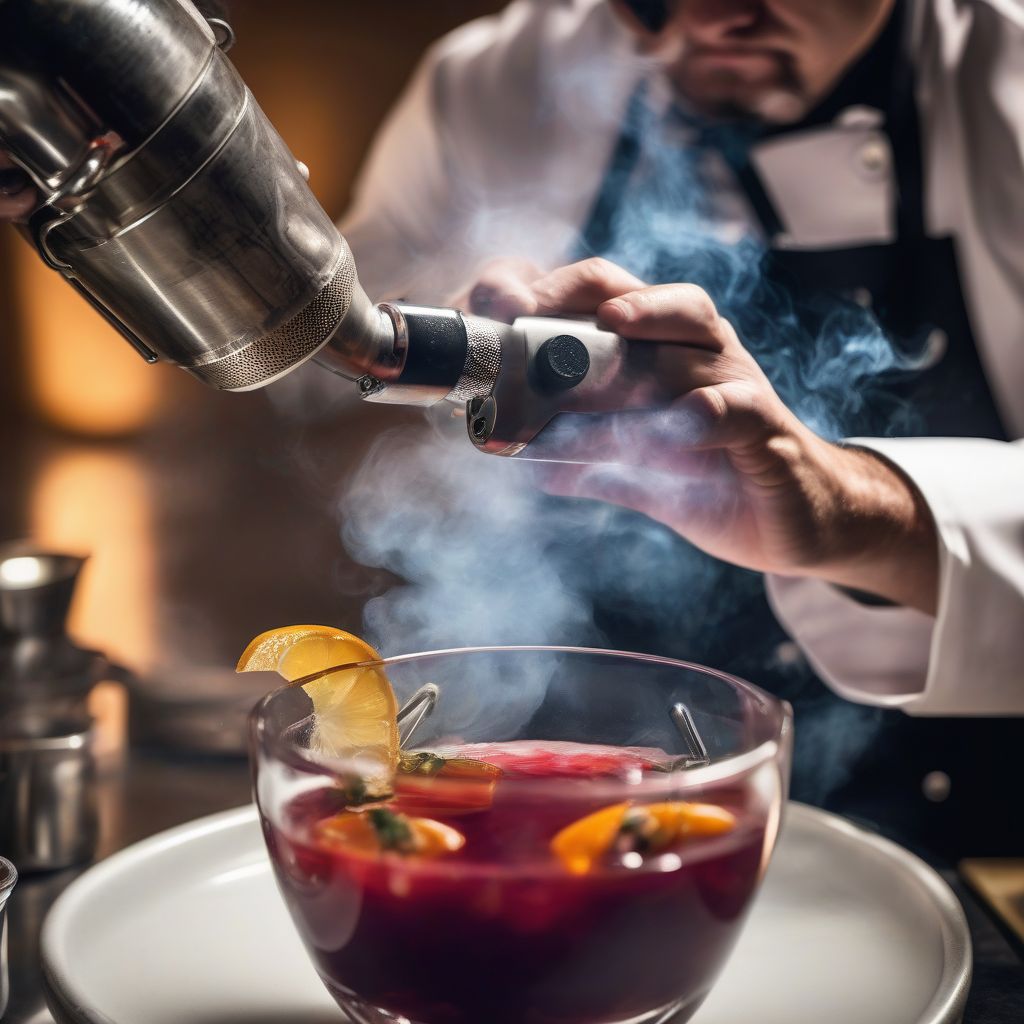Imagine being served a dish that looks like a work of art, defying all expectations of texture and form. A single bite explodes with flavors you never knew could coexist, each element a carefully crafted surprise. This is the allure of molecular gastronomy, a culinary movement that has taken the world by storm, transforming the landscape of fine dining.
A Culinary Alchemy: What is Molecular Gastronomy?
Molecular gastronomy is the fascinating intersection of science and cooking. It involves understanding the chemical and physical transformations that occur when food is prepared. Chefs trained in this discipline use scientific principles and innovative techniques to create visually stunning and intensely flavorful dishes, often pushing the boundaries of traditional cooking.
From Lab to Table: A Brief History
While the concept of using science to understand food has existed for centuries, molecular gastronomy as we know it emerged in the late 20th century. Pioneered by scientists like Nicholas Kurti and Hervé This, this movement initially focused on investigating traditional cooking methods. However, it quickly evolved, inspiring chefs to experiment with new techniques and equipment borrowed from the laboratory.
 Molecular Gastronomy Techniques
Molecular Gastronomy Techniques
The Pioneers: Chefs Who Redefined Dining
The rise of molecular gastronomy is intricately linked with visionary chefs who dared to break culinary boundaries.
- Ferran Adrià: The mastermind behind the legendary elBulli restaurant in Spain, Adrià is considered a pioneer of this movement. He is renowned for his avant-garde creations that challenged traditional notions of what a meal could be.
- Heston Blumenthal: At his acclaimed restaurant, The Fat Duck in England, Blumenthal has captivated diners with his playful and multi-sensory dining experiences, incorporating elements of psychology and nostalgia into his dishes.
- Grant Achatz: At Alinea in Chicago, Achatz is celebrated for his innovative approach to tasting menus, creating edible works of art that showcase the beauty and possibilities of molecular gastronomy.
Deconstructing the Delicious: Signature Techniques
Molecular gastronomy encompasses a range of techniques that allow chefs to manipulate ingredients in unprecedented ways:
- Spherification: Transforming liquids into delicate spheres that burst in the mouth, releasing intense flavors.
- Sous Vide Cooking: Precise temperature control for perfectly cooked proteins and vibrant vegetables.
- Edible Foams and Airs: Light and airy creations that add unexpected textures and flavor dimensions.
- Liquid Nitrogen Freezing: Instant freezing for creating unique textures and visually stunning presentations.
Beyond the Gimmick: The Evolution of a Movement
In its early days, molecular gastronomy was often met with skepticism, viewed by some as a fleeting trend focused on theatrics over taste. However, this culinary movement has matured significantly. Today, the emphasis has shifted towards a more balanced approach.
- Flavor First: While visual appeal remains important, the focus has shifted to using techniques to enhance and concentrate flavors, creating dishes that are as delicious as they are visually appealing.
- Sustainability and Locality: Leading molecular gastronomy chefs are increasingly emphasizing locally sourced, seasonal ingredients, reflecting a commitment to sustainability and responsible dining.
- Accessibility and Inclusivity: The movement has become less exclusive, with elements of molecular gastronomy finding their way into more casual dining experiences and even home kitchens.
[amazon bestseller=”molecular gastronomy”]
The Future of Fine Dining: An Enduring Legacy
Molecular gastronomy has left an indelible mark on the culinary world. While some of the more avant-garde techniques have become less common, the movement’s emphasis on innovation, creativity, and pushing culinary boundaries continues to influence chefs worldwide.
Embracing the Fusion:
We can expect to see a greater fusion of traditional cooking methods with molecular gastronomy techniques, resulting in dishes that are both familiar and exciting.
Technology at the Forefront:
As technology continues to evolve, we can anticipate new and even more innovative techniques emerging, further expanding the possibilities of what can be achieved in the kitchen.
A Focus on Experience:
Dining is no longer just about the food; it’s about creating a holistic and memorable experience. Molecular gastronomy will continue to play a key role in this evolution, with chefs crafting immersive and multi-sensory dining experiences.
From its avant-garde beginnings to its current focus on flavor, sustainability, and accessibility, molecular gastronomy has come a long way. As a culinary movement, it has fundamentally changed the way we think about food, pushing the boundaries of creativity and forever altering the landscape of fine dining. What new innovations and culinary delights await us in the future? One thing is certain: the journey of molecular gastronomy is far from over.
